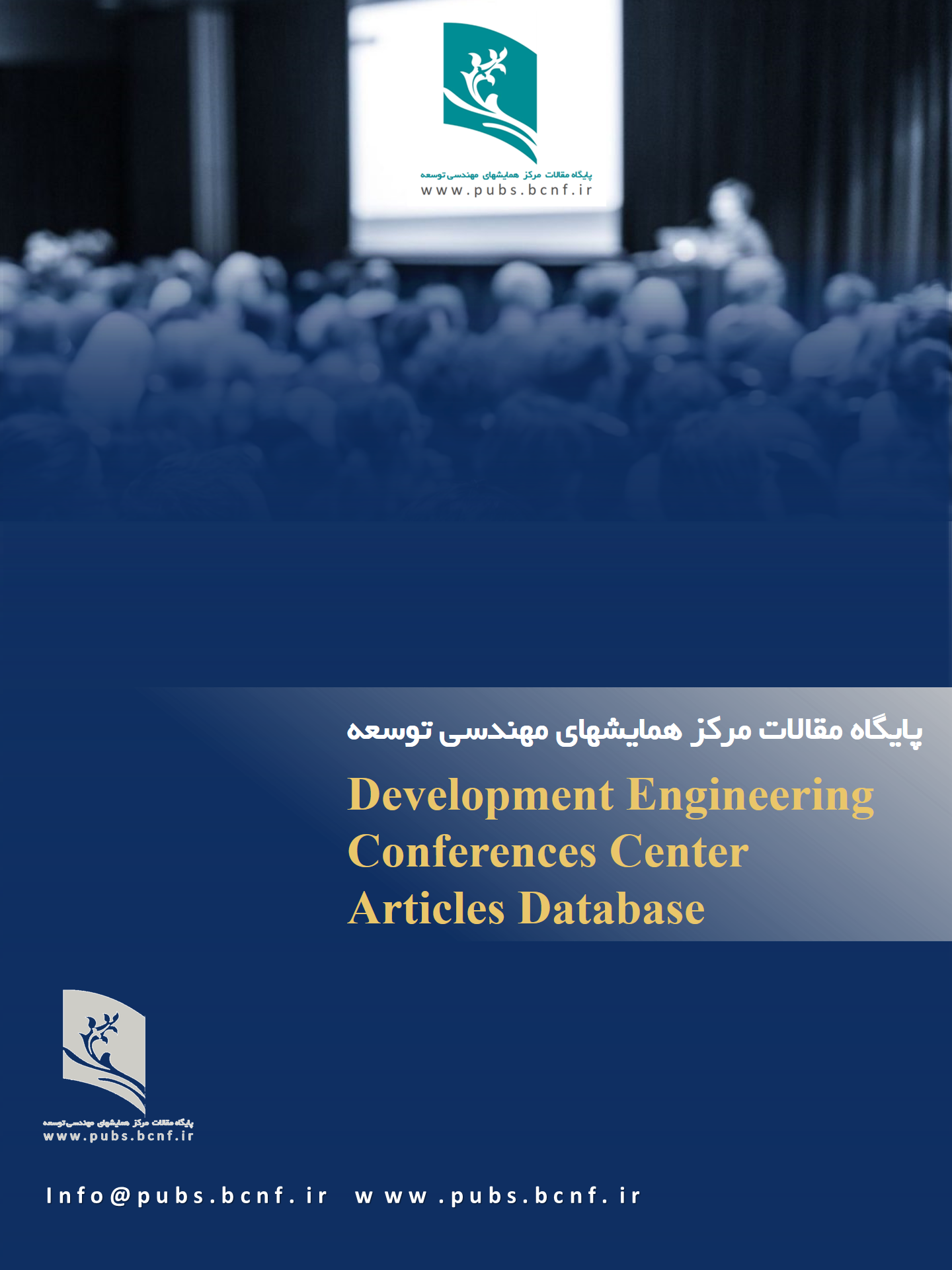مدلسازی عددی جداسازی ذرات پلیاستایرن در میکروکانال حلزونی مبتنی بر دیالکتروفورسیس
DOI:
https://doi.org/10.5281/zenodo.17045766Keywords:
دیالکتروفورسیس, میکروفلوئیدیک, جداسازی میکروذرات, شبیهسازی عددیAbstract
در این مقاله، جداسازی مداوم ذرات پلیاستایرن ۵ و ۱۰ میکرونی در یک ساختار میکروکانال دو-حلزونی با تعداد دورهای مختلف بهصورت عددی مورد بررسی قرار گرفت. هدف از مطالعه افزایش توان عملیاتی و کاهش ولتاژ اعمالی با استفاده از تکنیک دیالکتروفورسیس بود. میکروکانال حلزونی شامل یک ورودی و دو خروجی است و با اعمال اختلاف پتانسیل الکتریکی مناسب، ذرات بر اساس اندازه از یکدیگر جدا میشوند. در کانال حلزونی اول، حداقل ولتاژ مورد نیاز برای متمرکزسازی ذرات در سرعتها و تعداد دورهای مختلف تعیین شد، و در کانال حلزونی دوم، بازه زاویهای بهینه برای جداسازی صحیح ذرات مشخص گردید. شبیهسازی عددی با استفاده از محیط متنباز OpenFOAM انجام شد و ابتدا با مقایسه با نتایج یک مقاله مرجع، اعتبارسنجی شد. اثر پارامترهای هندسی و عملیاتی شامل تعداد دور کانال، سرعت متوسط و ولتاژ اعمالی بر کیفیت متمرکزسازی و جداسازی ذرات بررسی شد. نتایج نشان داد که با افزایش تعداد دور کانال، ولتاژ مورد نیاز برای متمرکزسازی کاهش مییابد، در حالی که با افزایش دبی ورودی کانال (سرعت متوسط)، این ولتاژ افزایش پیدا میکند. مناسبترین شرایط برای جداسازی ذرات در سرعت ۵۰۰۰ میکرومتر بر ثانیه و تعداد دور ۵ حاصل شد.
Downloads
References
1. Jones TB. Electromechanics of particles. Cambridge University Press; 1995.
2. M. Bayareh, An updated review on particle separation in passive microfluidic devices, Chem. Eng. Process. - Process Intesif. 2020; 153. 10.1016/j.cep.2020.107984.
3. K. Cheng, J. Guo, Y. Fu, J. Guo, Active microparticle manipulation: Recent advances, Sens. Actuators, 2021; A 322. 10.1016/j.sna.2021.112616.
4. H. Afsaneh, R. Mohammadi, Microfluidic platforms for the manipulation of cells and particles, Talanta Open. 5. 2022. 10.1016/j.talo.2022.100092
5. Pethig R. Dielectrophoresis: Status of the theory, technology, and applications. Biomicrofluidics. 2010;4(2).
6. "Zhu J, Tzeng TRJ, Xuan X. Continuous dielectrophoretic separation of particles in a spiral microchannel. Electrophoresis. 2010;31(8):1382-1388.
7. Wang Y, Wang J, Cheng J, Zhang Y, Ding G, Wang X, et al. Serial separation of microalgae in a microfluidic chip under inertial and dielectrophoretic forces. IEEE Sensors J. 2020;20(24):14607-14616.
8. C. Church, J. Zhu, J. Nieto, G. Keten, E. Ibarra, X. Xuan, Continuous particle separation in a serpentine microchannel via negative and positive dielectrophoretic focusing, J. Micromech. Microeng. 20; 2010. 10.1088/0960-1317/20/6/065011.
9. Puri P, Kumar V, Belgamwar SU, Ananthasubramanian M, Sharma N. Microfluidic platform for dielectrophoretic separation of bio-particles using serpentine microelectrodes. Microsyst Technol. 2019; 25:2813-2820.
10. Derakhshan R, Ghasemi A, Moradi R, Ramiar A. Design and numerical investigation of a circular microchannel for particle/cell separation using dielectrophoresis. Adv Powder Technol. 2023;34(7):104046.
11. Ozyilmaz, Eda, and Gamze Gediz Ilis.. "Design and Performance Analysis of Spiral Microchannels for Efficient Particle Separation Using Inertial Microfluidics" Micromachines , 2025; 16, no.3:349. 10.3390/ mi16030349.
12. Pakhira, W., Kumar, R., Ibrahimi, K.M. et al. Design and Numerical Analysis of a Single Inlet-Based Spiral Microfluidic Chip for Separation of Circulating Tumor Cells and Blood Plasma Using the Inertial Focusing Approach. Chromatographia. 2025; 10.1007/s10337-025-04411-w.
13. Omrani, V., Targhi, M.Z., Rahbarizadeh, F. et al. High-throughput isolation of cancer cells in spiral microchannel by changing the direction, magnitude and location of the maximum velocity. Sci Rep 13, 3213(2023). https://doi.org/10.1038/s41598-023-30275-x
14. Uddin MR, Sarowar MT, Chen X. Separation of CTCs from WBCs using DEP-assisted inertial manipulation: A numerical study. Electrophoresis. 2023 Dec;44(23):1781-1794. doi: 10.1002/elps.202300090. Epub 2023 Sep 27. PMID: 37753944.
15. Amirreza Khodayari, Sina Ebrahimi, Seyed Mohammad Hossein Rezaei Demneh, Mohammadmahdi Topaheidari, Ebrahim Ayani, Amir Shamloo; Square-based spiral microchannel for the separation of circulating tumor cells using surrogate optimization based on the inertial method. Physics of Fluids 1 March 2025; 37 (3): 032038.



